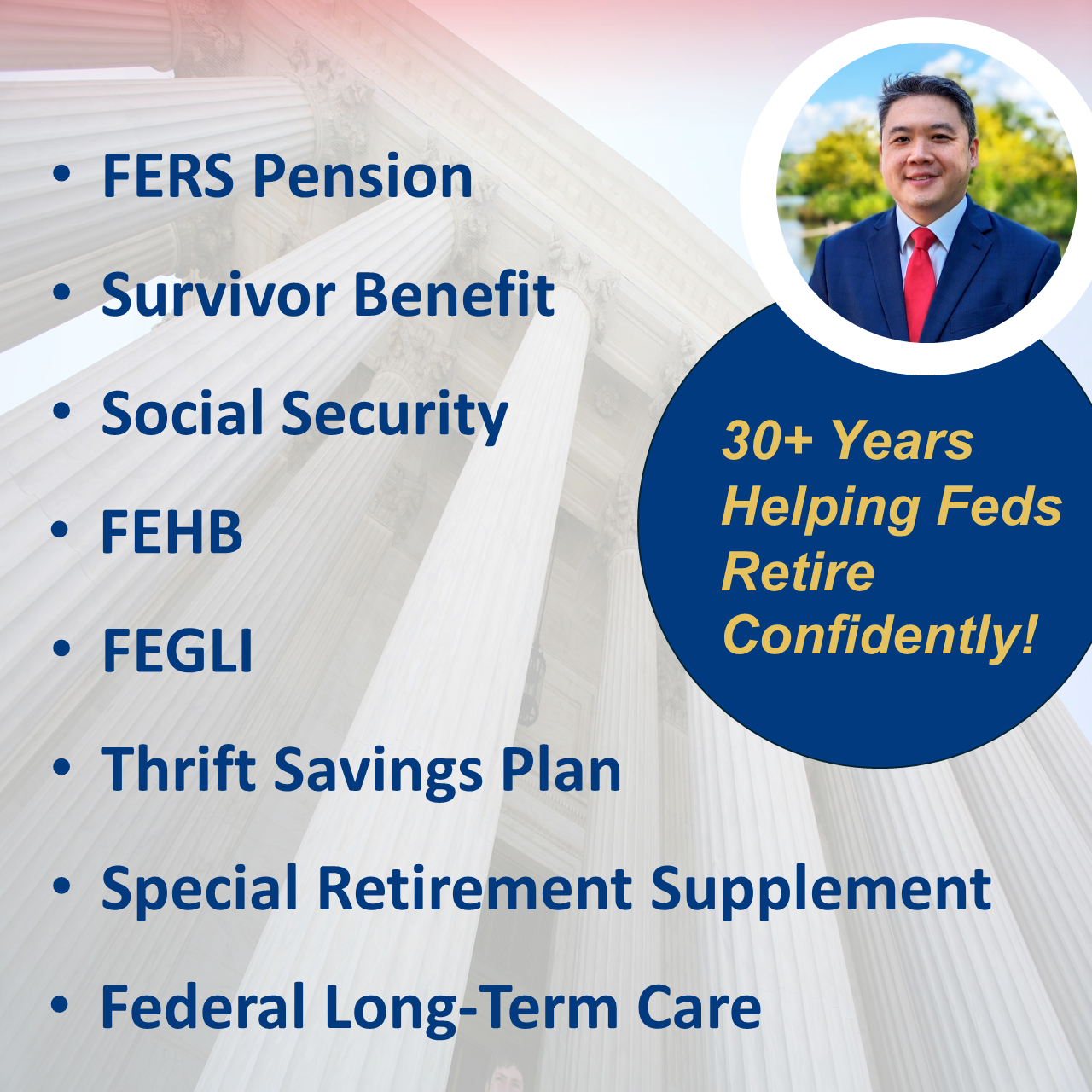Deep Dive into 2025 GS Pay Scale Adjustments
Introduction: Why the 2025 GS Pay Scale Matters for Your Take-Home Pay & Retirement
For federal employees, even a modest pay bump can have ripple effects that touch everything from monthly cash flow to long-term retirement security. In 2025, General Schedule (GS) employees saw an average 2.0% pay raise, a 1.7% across-the-board increase combined with an average 0.3% boost in locality pay. While this is notably lower than the 5.2% jump in 2024, it still boosts take-home pay, Thrift Savings Plan (TSP) contributions, your high-3 retirement calculation, and premiums for benefits like the Federal Employees’ Group Life Insurance (FEGLI). This increase went into effect on January 12, 2025.
But how much of a net change should you expect in 2026? And how can a relatively small raise still affect your broader retirement strategy? Let’s walk through all the details: the across-the-board raise, how locality pay may differ in your area, and what the 2025 GS Pay Scale means for your FERS pension, TSP, and beyond.
Overview of the 2025 GS Pay Scale Adjustment
The 2025 GS Pay Scale reflects decisions made last December, when President Biden finalized the new pay rates by executive order. Although the overall raise is smaller compared to recent years, it marks another incremental step to keep federal compensation closer to market wages. As always, the General Schedule divides pay across grades and steps, with grade corresponding to job responsibility and step to longevity and performance. Locality pay stacks on top of that base, capturing regional cost-of-labor differences. For the finalized pay charts, see our 2025 federal employee pay raise update. Here’s how it breaks down:
Across-the-Board 1.7% Base Pay Increase
Regardless of duty station, federal employees under the GS system saw a uniform 1.7% boost to base pay in 2025. This portion does not vary by location, whether you work in a high-cost city or a smaller market, the basic pay table grows by the same 1.7% across every grade and step. The locality “Rest of U.S.” only gets the base 1.7 percent.
Locality Pay: Average 0.3% Bump — But It Varies
The second component is an average 0.3% bump in locality pay. Depending on where you live, your locality adjustment might be slightly above or below that average. Areas like San Francisco, Seattle, and Washington-Baltimore frequently see higher locality rates, while some regions and might end up closer to the 0.2%–0.3% mark. For 2025, Wyandot County, Ohio and Yuma County, Arizona have been added to their respective locality areas, meaning affected employees there no longer default to the broader national rate. You can compare locality factors on our interactive federal locality pay map.
Effective Date & First Paycheck Impact
The 2025 raise officially began with the first full pay period on or after January 12, 2025. Keep in mind it can take your agency’s payroll office an additional pay cycle or two to implement the adjusted schedule, so you may not see the difference in your bank account until a few weeks into 2025. If you’re projecting your budget for the new year, it’s wise to calculate the net effect of the raise after factoring your tax withholdings, retirement contributions, and any changes to benefits premiums.
2025 vs 2024: A Quick Perspective Check
By all measures, 2024 was an exceptional year for federal raises, with an average 5.2% increase. That was the largest hike many employees had seen in decades. Now that the 2025 average raise is scaled back to 2.0%, some federal workers wonder if the trend of larger increases is over, especially with a possible pay freeze in 2026. The reality is that 2024’s boost was somewhat anomalous, partly reflecting catch-up adjustments for prior years of more modest raises.
For quick context, here’s a snapshot comparing the two years’ average increases:
| Year | Average GS Raise | Base Pay Portion | Locality Portion |
|---|---|---|---|
| 2024 | 5.2% | ≈4.7% | ≈0.5% |
| 2025 | 2.0% | 1.7% | 0.3% (avg) |
It’s important to note that while 2025’s raise is smaller, any bump in pay still has a cumulative influence on your retirement annuity, Social Security record (if you’re under the wage base), and TSP contributions.
How GS Pay Is Calculated (Grade, Step, Locality)
Many of our clients who have been federal employees for decades still appreciate a quick refresher on how GS pay is structured. That’s because your grade, step, and locality intersect in ways that significantly influence your paycheck.
Grade & Step Refresh
Under the General Schedule, there are 15 grades (GS-1 through GS-15). Within each grade, there are 10 steps, with each step generally about 3% higher than the one before it. Movement from step to step is based on performance and longevity. Early steps usually require a year of acceptable performance to advance, and later steps can take two or three years. The result is a predictable ladder of base compensation, though factoring in locality pay creates more variation across the country.
The Mechanics of Locality Pay in 2025
Locality pay exists to keep federal salaries competitive with private-sector wages in different markets. Each year, the Federal Salary Council reviews market data to see where adjustments are needed. In 2025, they recommended—and OPM approved—expanding some existing areas. Wyandot County, Ohio now falls under the Columbus, Ohio locality area, and Yuma County, Arizona joins the Phoenix, Arizona locality. For those employees, the difference between the “Rest of U.S.” rate and the higher market-based rate could add several thousand dollars to annual pay.
2025 GS Pay Scale Tables You Can Use Today
While OPM publishes the official pay tables for every single grade and step, it’s often helpful to see a snapshot of what you might earn. Below is a simplified GS Base Pay table for 2025 that applies before any locality adjustments. You’ll also find a comparison of a few major localities frequently asked about by our clients.
Base Pay Table (GS-1 to GS-15)
| Grade | Step 1 | Step 5 | Step 10 |
|---|---|---|---|
| GS-5 | $34,600 | $38,200 | $44,000 |
| GS-9 | $49,050 | $55,250 | $63,750 |
| GS-12 | $74,500 | $86,550 | $96,840 |
| GS-15 | $125,100 | $146,900 | $162,700 |
(Note: These figures are approximate. Check official OPM tables for updated, precise numbers.)
Rest-of-U.S. Example vs High-Cost Localities (DC, San Francisco, Houston)
To illustrate the effect of locality pay, here’s a sample of what a GS-12 or GS-15 might see in 2025, depending on location. The locality differentials can range anywhere from the mid-teens to over 40% in extremely high-cost areas.
| Grade/Step | Rest of U.S. | Washington-Baltimore | San Francisco-San Jose | Houston-The Woodlands |
|---|---|---|---|---|
| GS-12/Step 5 | $86,550 | $115,900 | $125,000 | $116,400 |
| GS-15/Step 5 | $146,900 | $196,000 | $211,000 | $197,000 |
(Illustrative estimates; your official OPM table will provide precise locality pay factors.)
GS-12 and GS-15 Spotlight
We often hear from employees approaching retirement in GS-12 through GS-15 positions, because that range covers many career professionals preparing for their high-3. If you’re nearing the finish line and want to maximize your pensionable pay, it’s especially critical to understand how these 2025 raises factor into your final earnings trajectory.
What the 2025 Raise Means for Your Retirement Plan
Even a 2% pay raise can add up to significant dollars over the course of your retirement. This is particularly true if 2025 is one of the final years included in your “high-3” average salary—those highest 36 consecutive months used to calculate FERS annuity benefits.
Higher TSP Contributions—Why You Might Increase Your Percentage Now
If you currently contribute a fixed percentage to your TSP, an increase in base pay means a higher dollar amount going into your account automatically—without you having to tweak a thing. But if you allocate a flat dollar figure each paycheck, you might consider bumping your contributions to stay on track with your long-term savings goals. The additional income could be a good incentive to boost your TSP rate by 1–2 percentage points, especially if you’re behind on savings and want to reach the IRS annual contribution limit. Check the latest 2025 TSP contribution maximums before making changes.
High-3 Average Salary & FERS Pension Implications
Testing out the numbers, an employee whose high-3 salary was hovering around $110,000 before 2025 might see it jump to about $112,200 after the 2025 raise. That difference doesn’t sound like much on the surface, but it translates into more pension income over the course of retirement.
| Scenario | Average High-3 Salary | Annual FERS Pension* |
|---|---|---|
| Before 2025 raise | $110,000 | $33,000 |
| After 2025 raise | $112,200 | $33,660 |
*Assumes 30 years of service at a 1% multiplier. Actual pension figures can vary by agency and personal factors.
If you’re within a year or two of retirement, that incremental raise can still influence your lifetime pension payout. Deciding whether to extend your career into 2025 to capture that higher salary in your high-3 is a personal call, but it’s worth running the numbers with a specialized financial advisor for federal employees.
Tax Withholding & Roth Conversions Opportunity Window
One overlooked aspect of a pay increase is the potential shift in your tax bracket or your ability to convert part of your traditional TSP balance into a Roth. If your adjusted gross income changes, you may find new ways (or lose certain ways) to manage your tax liability. Sometimes, employees intentionally adjust withholding or plan partial Roth conversions after a raise to optimize their total tax picture. For strategy ideas, explore our guide to tax-smart Roth conversions. This is especially relevant if you plan to retire in a few years and anticipate dropping into a lower tax bracket down the road.
Curious how these adjustments fit into your retirement blueprint? Register for a free 1-hour live FERS retirement planning workshop to see how the 2025 raise can factor into your longer-term strategy.
Legislative Updates & Future Outlook
Though 2025’s increase is relatively straightforward, a few relevant changes accompany it. The annual premium pay cap climbs to $289,400 for eligible positions, matching the Vice President’s salary. Wyandot and Yuma Counties are now part of expanded locality areas, a minor but meaningful tweak for employees there. Looking ahead to 2026, pay raises could either revert to more typical 2 – 3% rates or shift higher, depending on how Congress and federal pay agency negotiations evolve. Budget concerns and inflation trends also factor into these discussions. A 0% pay raise is also likely, based on early indicators.
Some employees ask if Congress might override adjustments to locality areas or freeze pay altogether. While it’s not unheard of, current indications suggest that any changes to 2026 pay would still follow similar executive orders and the President’s Pay Agent recommendations.
Action Checklist: Maximizing Your 2025 Income
While some prefer to “set it and forget it,” we recommend being proactive with any pay change. Here are a few smart steps:
- Review and update your TSP contributions. Consider raising your percentage if you have room to reach IRS limits.
- Double-check your withholding to ensure you’re paying the right amount of federal and state taxes.
- Set a reminder to reevaluate your FEHB premiums mid-year—retirement planning and health coverage often go hand-in-hand.
- Confirm with HR if you’re close to your next step increase. Timing can affect your high-3 average salary.
- Consult with a financial planner who holds advanced federal designations (like ChFEBC®, CFP®, AIF®) for guidance specific to federal benefits.
Conclusion: Small Raise, Big Planning Opportunities
Even though the 2025 GS Pay Scale raise seems modest compared to 2024, it can pack considerable punch over the long run—boosting TSP balances, shaping a healthier high-3, and opening up windows to fine-tune tax strategies. For federal employees nearing retirement, small but steady increases can bolster confidence in your future income streams. There’s no universal blueprint for when to retire, how to optimize TSP contributions, or whether to tweak tax withholding—but having the right data (and the right guide) can make all the difference.
To see exactly how the 2025 raise fits into your bigger retirement picture, sign up for one of our free Federal Retirement Planning Workshops. Our Fed-Expert Financial Blueprint was created with federal benefits like FERS, TSP, and FEHB in mind, so you can make informed decisions and retire with greater confidence.
Frequently Asked Questions
When will the 2025 GS pay raise hit my bank account? Effective January 12, 2025, but some agencies may take an extra pay cycle to process the new rates. You’ll typically see the raise reflected in your paycheck by late January or early February.
How do I look up my locality rate? OPM publishes updated pay tables each year, which break down pay by grade, step, and locality area. You can also review our interactive locality pay map for a quick reference.
Will my overtime/LEAP/premium pay rise too? In most cases, yes. Many premium pays are calculated as a percentage of your base or adjusted salary, so a raise in GS base pay and locality can increase overtime or additional pay entitlements.
Does the 2% raise change my Social Security earnings record? If you’re under the Social Security wage base limit, higher earnings mean you’ll report more wages for that year, potentially raising your future Social Security benefit. However, the impact might be modest compared to your overall FERS annuity.
Can I retire before my next step increase? Yes, you can. However, that step increase may or may not substantially impact your high-3 average salary, so timing your retirement around step jumps is often a strategic decision. Discuss the specifics with a credentialed financial planner for personalized advice.












